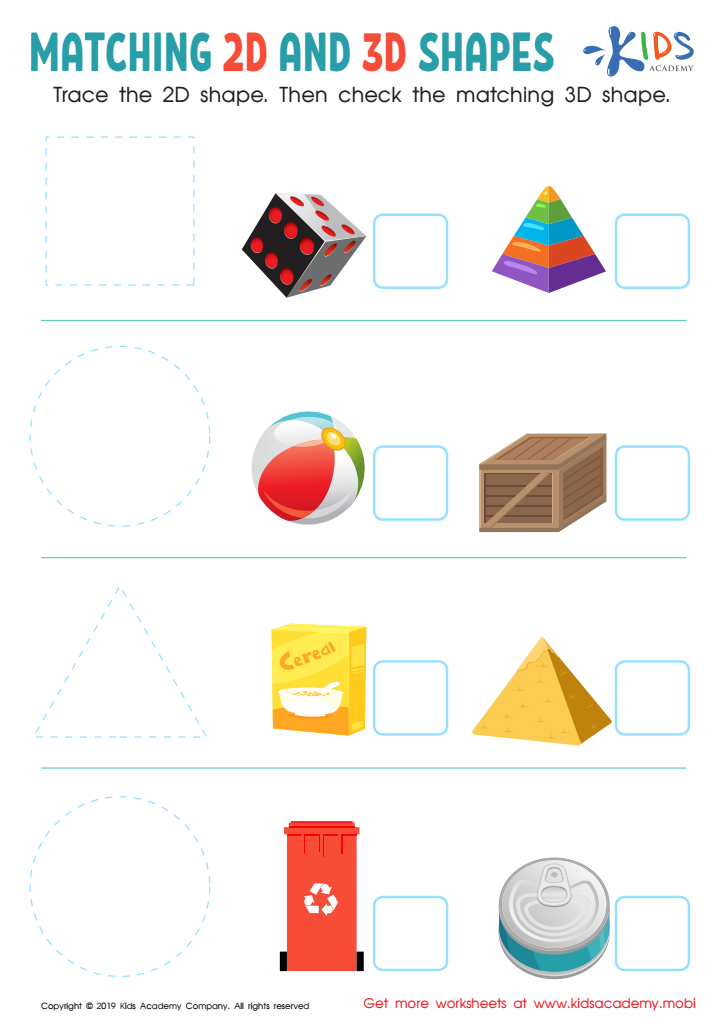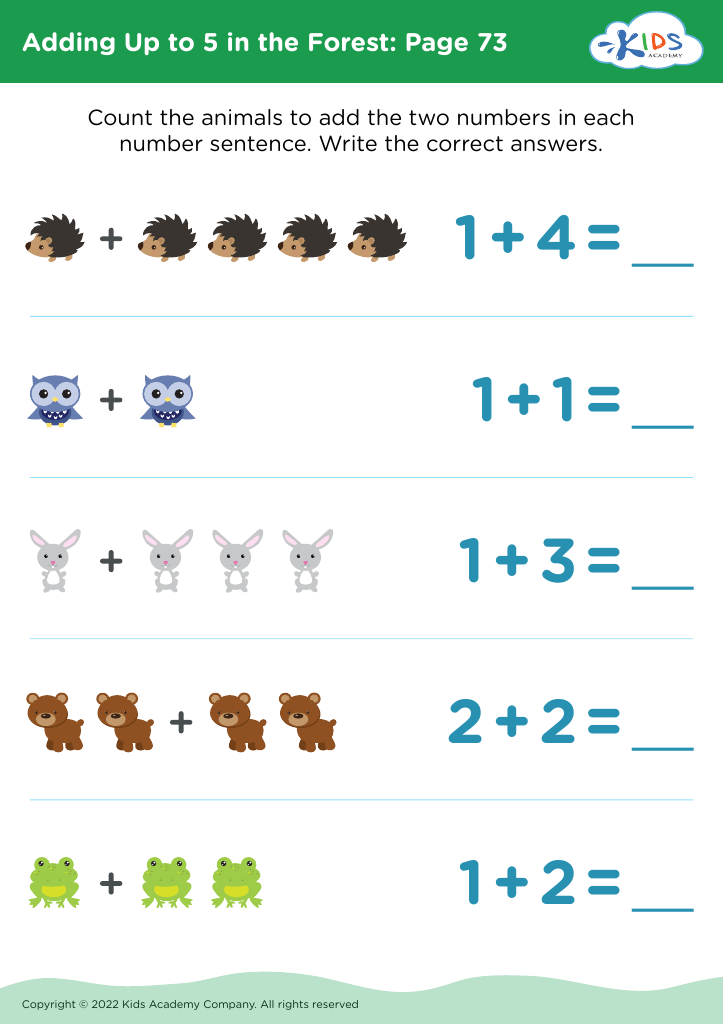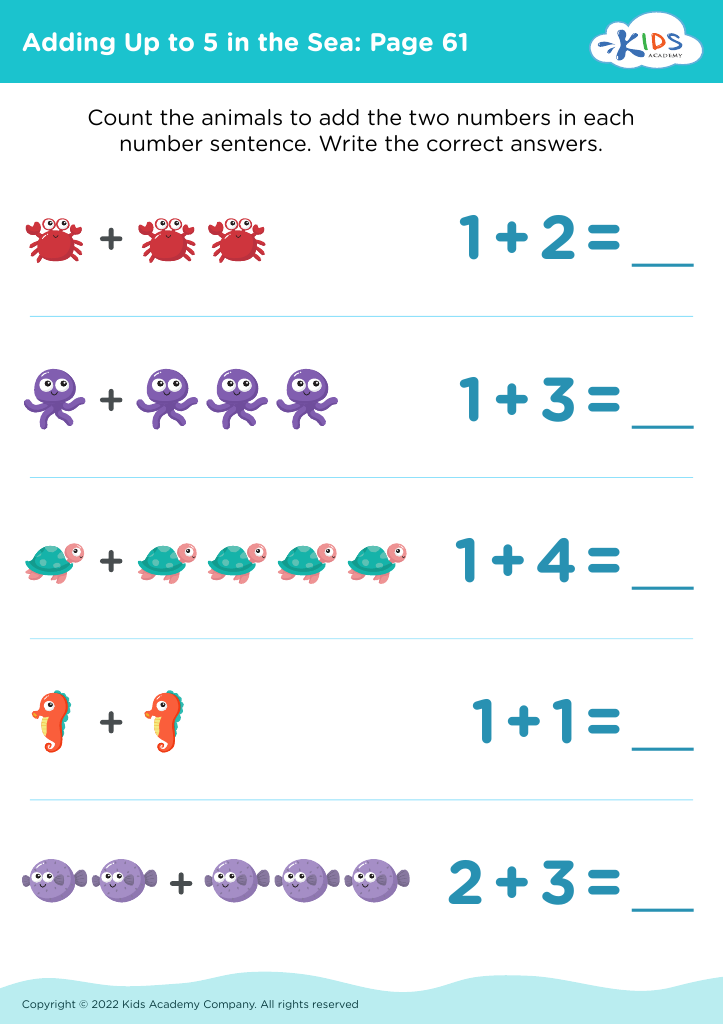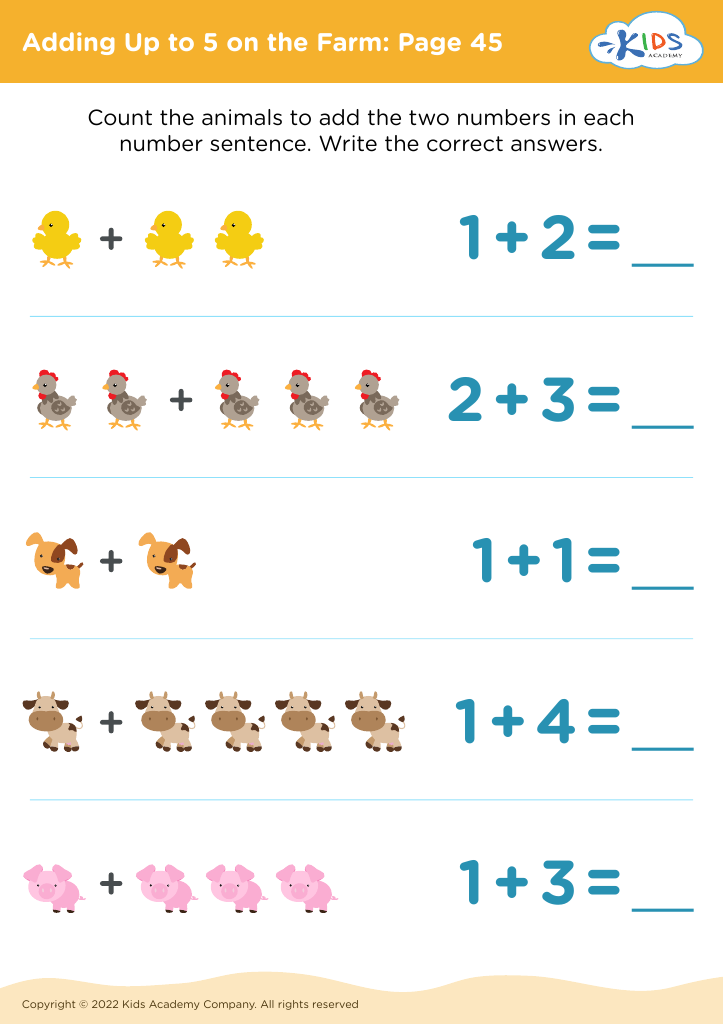Visual-motor skills Math Worksheets for Ages 5-8
5 filtered results
-
From - To
Enhance your child's learning experience with our Visual-Motor Skills Math Worksheets for ages 5-8! Designed to improve coordination and concentration, these engaging worksheets combine math concepts with fun visual activities. Children will practice essential skills such as number recognition, simple addition, and subtraction while honing their fine motor abilities through tracing, coloring, and connecting dots. Each worksheet is crafted to capture young learners' attention, helping them build confidence in their math skills. Perfect for both classroom and home use, these worksheets are a valuable resource for nurturing your child's cognitive and physical development. Get started on the path to math mastery today!


Matching 2D and 3D Shapes Worksheet
Visual-motor skills play a crucial role in a child's early development, especially in mathematics for ages 5-8. These skills involve the coordination between what a child sees and how they respond physically—essential in activities like writing numbers, drawing shapes, and solving problems visually.
Parents and teachers should care about visual-motor skills in math because they serve as foundational skills for learning more complex mathematical concepts. Strong visual-motor coordination helps children accurately copy numbers and shapes, making it easier for them to engage with tasks such as measuring, graphing, and counting. Furthermore, good visual-motor skills enhance spatial awareness, which is essential in geometry and more advanced math disciplines.
Enhancing these skills promotes independence and confidence in young learners, reducing frustration during math activities. Additionally, when children succeed in math because they can effectively combine what they see with physical responses, their overall attitude toward the subject may improve, fostering long-term interest and perseverance in learning.
In summary, nurturing visual-motor skills can significantly impact a child’s early academic success and motivation in math, creating a solid foundation for lifelong learning. Prioritizing these skills among educators and parents is vital for holistic child development.



 Assign to My Students
Assign to My Students






















